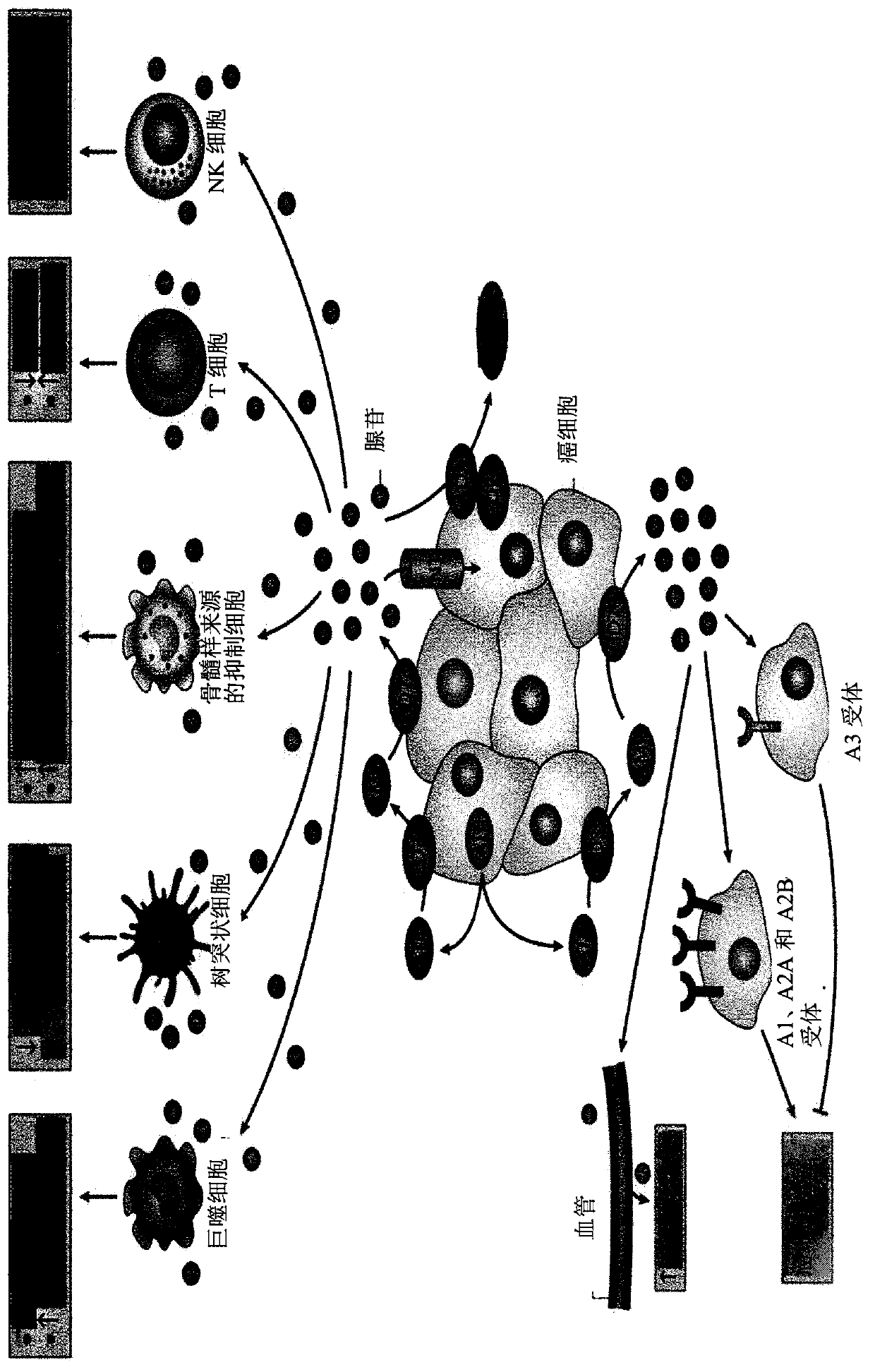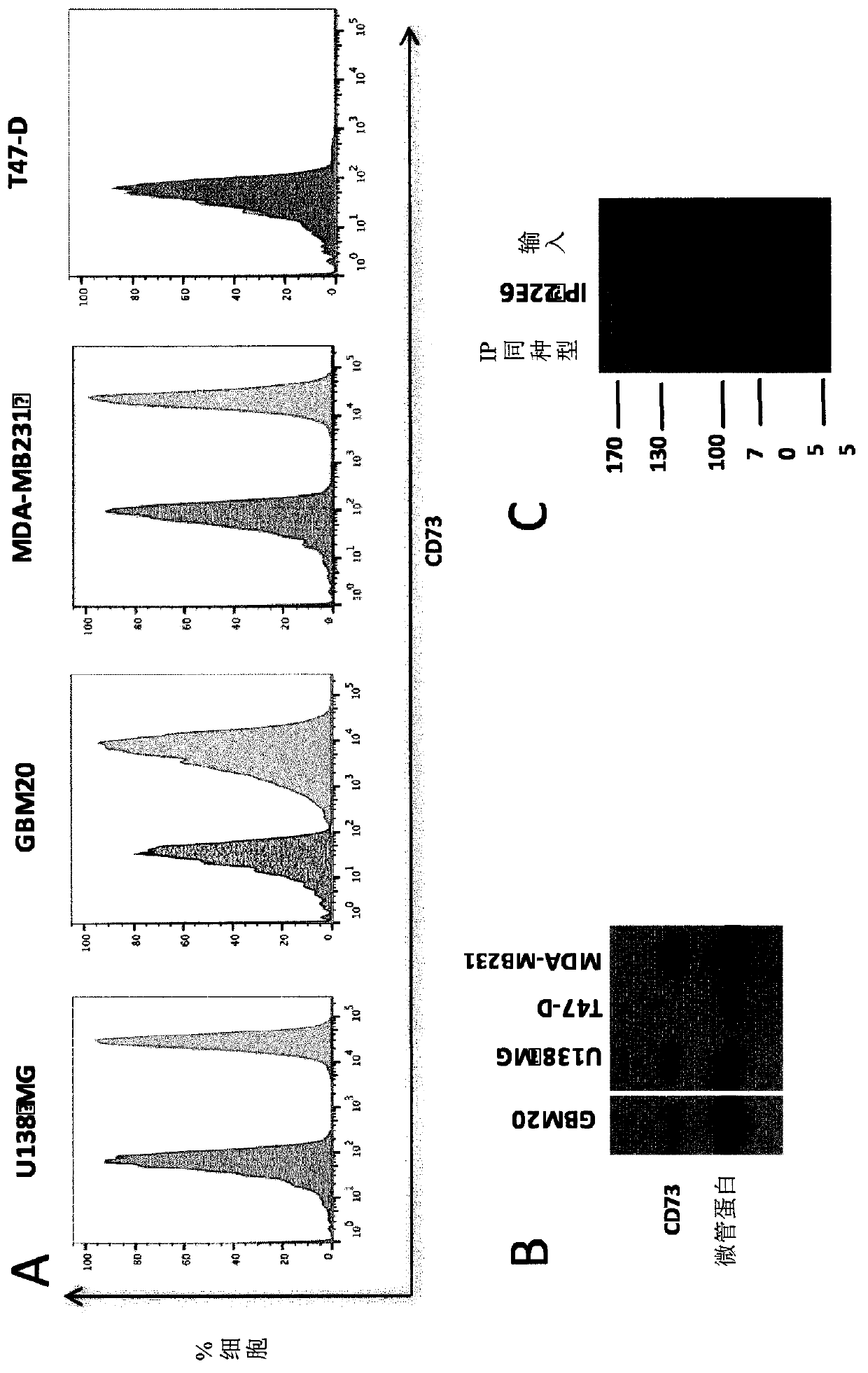Novel cd73 antibody, preparation and uses thereof
A -CD73, antibody technology, applied in the field of improved anti-CD73 antibody, can solve the problem that CD73 protein does not inhibit CD73 protease activity
- Summary
- Abstract
- Description
- Claims
- Application Information
AI Technical Summary
Problems solved by technology
Method used
Image
Examples
Embodiment 1
[0563] Example 1: Preparation of functional mAbs targeting membrane proteins on the surface of cancer cells
[0564] In this example, mAb 22E6 ( figure 2 ). Extracellular vesicles (EVs) were obtained from the GBM20 cell line by centrifugation, isolated from the supernatant, and injected into rats using standard immunization techniques known in the art. Hybridoma cell lines derived from rat splenocytes were generated and screened for antibodies that bind to and specifically inhibit the enzymatic activity of the membrane-bound form of CD73 protein. Identification of the mAb of interest, and thus mAb 22E6, was performed by immunoprecipitation coupled to mass spectrometry (IP-MS).
Embodiment 2
[0565] Example 2: Characterization of the binding affinity and specificity of mAb 22E6
[0566] In this example, mAb 22E6 binding affinity was characterized (Table 3). It has been shown that mAb 22E6 recognizes the CD73 protein on cancer cells. Using specific flow cytometry techniques, fluorescence-activated cell sorting (FACS) with 22E6 and a secondary mAb labeled with an anti-rat-IgG-specific fluorophore, it has been shown that the protein recognized by the 22E6 mAb of the present invention exists On the surface of human cancer cells of a total of about 30 cell lines tested. Four representative cell lines of the 30 tested cell lines are shown here in image 3 In A. U138 MG and GBM20 are glioblastoma cell lines, and MDA-MB231 and T47D are human breast cancer cell lines. To compare the specificity of mAb 22E6 with that of a commercially available CD73 mAb, immunoblotting was performed with the same cell lines (U138 MG, GBM20, MDA-MB231, and T47D) using a commercially avail...
Embodiment 3
[0567] Example 3: Characterization of the inhibitory properties of mAb 22E6
[0568] In this example, the inhibitory properties of mAb 22E6 were characterized and it has been shown that 22E6 blocks the production of adenosine ( Figure 4 ). Therefore, in this Figure 4 As indicated, CD73-positive human A375 melanoma cells were incubated with AMP (adenosine monophosphate) for 60 min, and the concentrations of AMP (left) and ADO (adenosine, right) in the supernatant were measured. Furthermore, it has been shown that 22E6 mAb inhibits ADO production by human CLL cells ( Figure 5 ). Adenosine 5'-(α,β-methylene)diphosphate (APCP) is a small molecule specific CD73 inhibitor.
PUM
 Login to View More
Login to View More Abstract
Description
Claims
Application Information
 Login to View More
Login to View More - R&D
- Intellectual Property
- Life Sciences
- Materials
- Tech Scout
- Unparalleled Data Quality
- Higher Quality Content
- 60% Fewer Hallucinations
Browse by: Latest US Patents, China's latest patents, Technical Efficacy Thesaurus, Application Domain, Technology Topic, Popular Technical Reports.
© 2025 PatSnap. All rights reserved.Legal|Privacy policy|Modern Slavery Act Transparency Statement|Sitemap|About US| Contact US: help@patsnap.com



